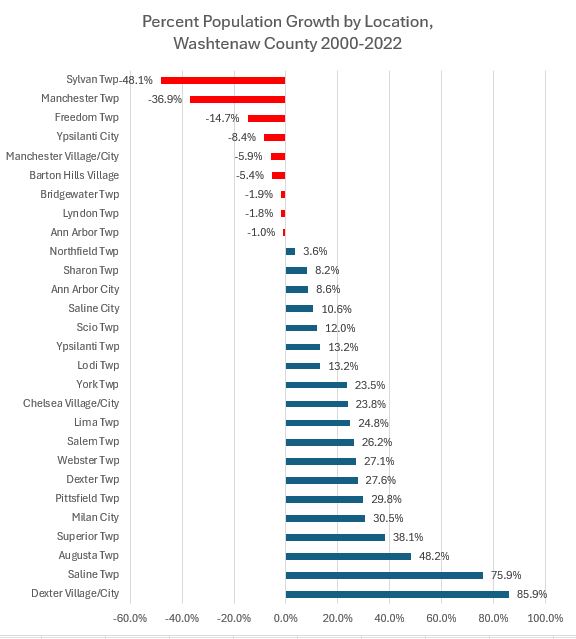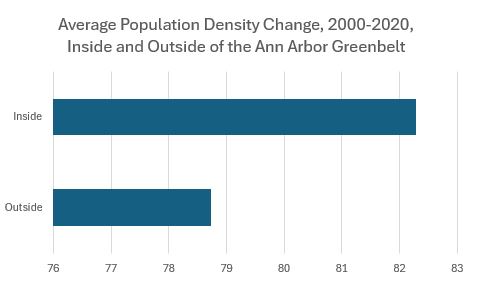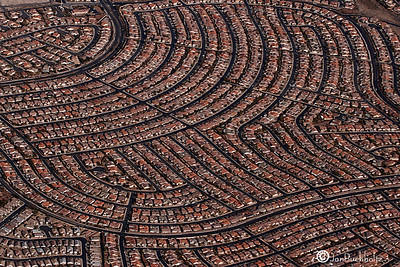Yesterday, I looked at the impact of Ann Arbor’s Greenbelt on housing costs in the city. But what has happened to the rest of Washtenaw County over the past 20 years? In short, the Ann Arbor Greenbelt does exactly what other greenbelts throughout history have done: they reduce development and increase house prices in the greenbelt city. They also force people who might otherwise have lived in the greenbelt city to go elsewhere, either because there is no available housing, or the available housing is unaffordable.
How does this happen? According to data from the US Census Bureau, the population in Washtenaw County in 2000, was 331,977. In the 2020 decennial census, Washtenaw County’s population had increased by 12.2%, to 372,540.
During the same period, the population of Ann Arbor (City) increased by 8.58%, so its growth over 20 years was 30% lower than the growth rate in the rest of Washtenaw County. That tracks with the limits on housing availability and the increased cost of living in Ann Arbor City. But where in Washtenaw County has the population changed?
Among Greenbelt communities – those places where the City of Ann Arbor buys properties – the population grew by 21.9% between 2000 and 2020. In all communities outside the Greenbelt, the population grew by a more modest 9%. The population of Ypsilanti Township increased by 13.2% during the same period. In Ypsilanti (City), the population dropped by nearly 8.5% between 2000 and 2002, and almost 12.5% between 2003 and 2022.

Growth inside and outside of Ann Arbor Greenbelt
Population density is another indicator of where people live; it counts the population per square mile. In Ann Arbor city, between 2000 and 2022, the population density increased by 72.22 residents per square mile. Inside the Greenbelt, the population density increased by 74 residents per square mile. Outside the greenbelt, the population density increased by 27 residents per square mile.

But does that level of growth equate to sprawl? In looking only at the municipalities that experienced population growth higher than 21.9% – the average population growth in the Greenbelt – the highest population growth rates were seen in Dexter Village/City (86%), Saline Township (75%), and Augusta Township (48%). None of these municipalities are part of the Ann Arbor Greenbelt. In fact, the only Greenbelt municipality in the top five by population growth was Superior Township, where Ann Arbor has purchased only a slim handful of parcels. Pittsfield Township, another Greenbelt municipality, was 6th in population growth (29.8%), but as with Superior Township, Ann Arbor has purchased only a couple of properties there to date.
At the least, it seems to indicate that certain communities entirely outside the Greenbelt attracted significant population growth, which sounds a lot like sprawl. It’s impossible to say that the Greenbelt caused sprawl in these adjacent communities, but the population data show that some of these communities grew by 200%-300% compared to the 22% population growth in communities inside the greenbelt and the <9% growth in the City of Ann Arbor. Tomorrow, I will look more closely at Washtenaw County’s population winners and losers. It’s important to know where people are moving because the impact of Ann Arbor’s Greenbelt isn’t always positive.
Photo Credit: Jan Buchholtz, via Flickr









